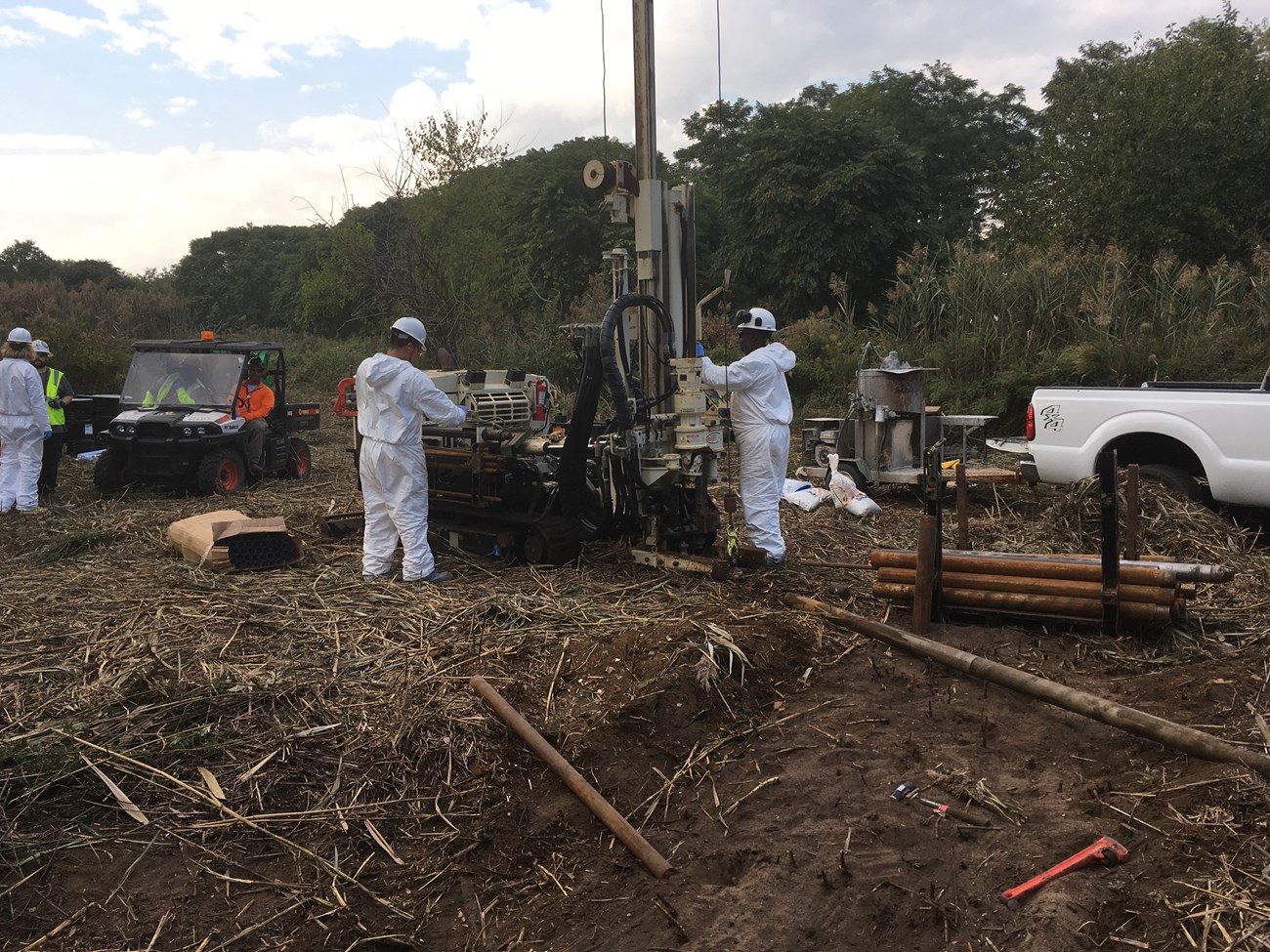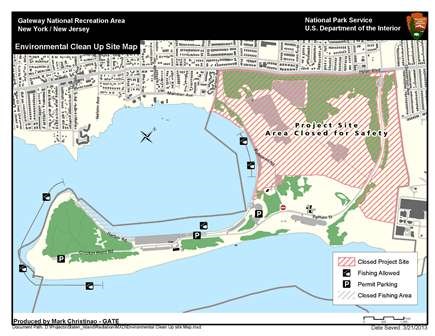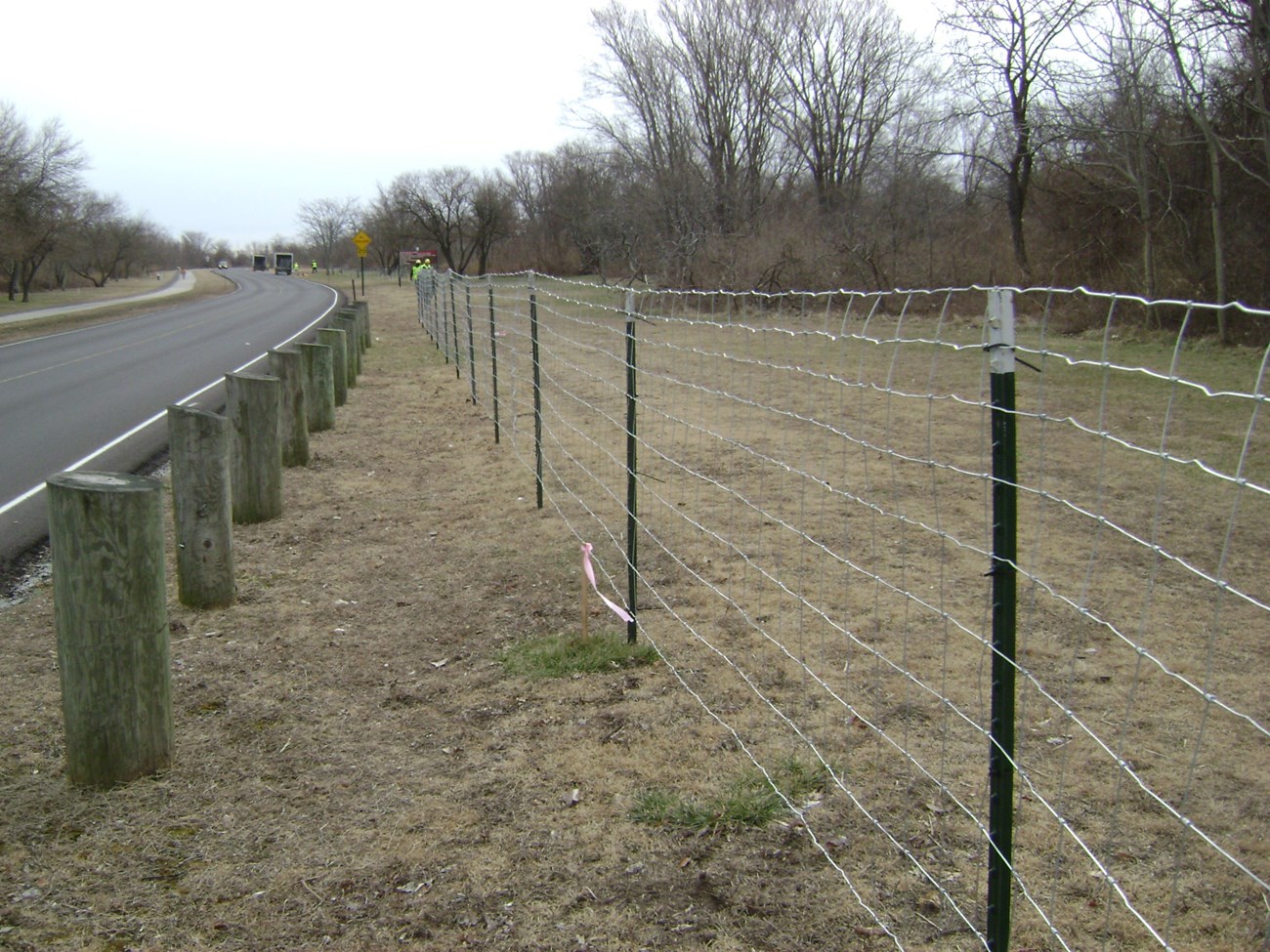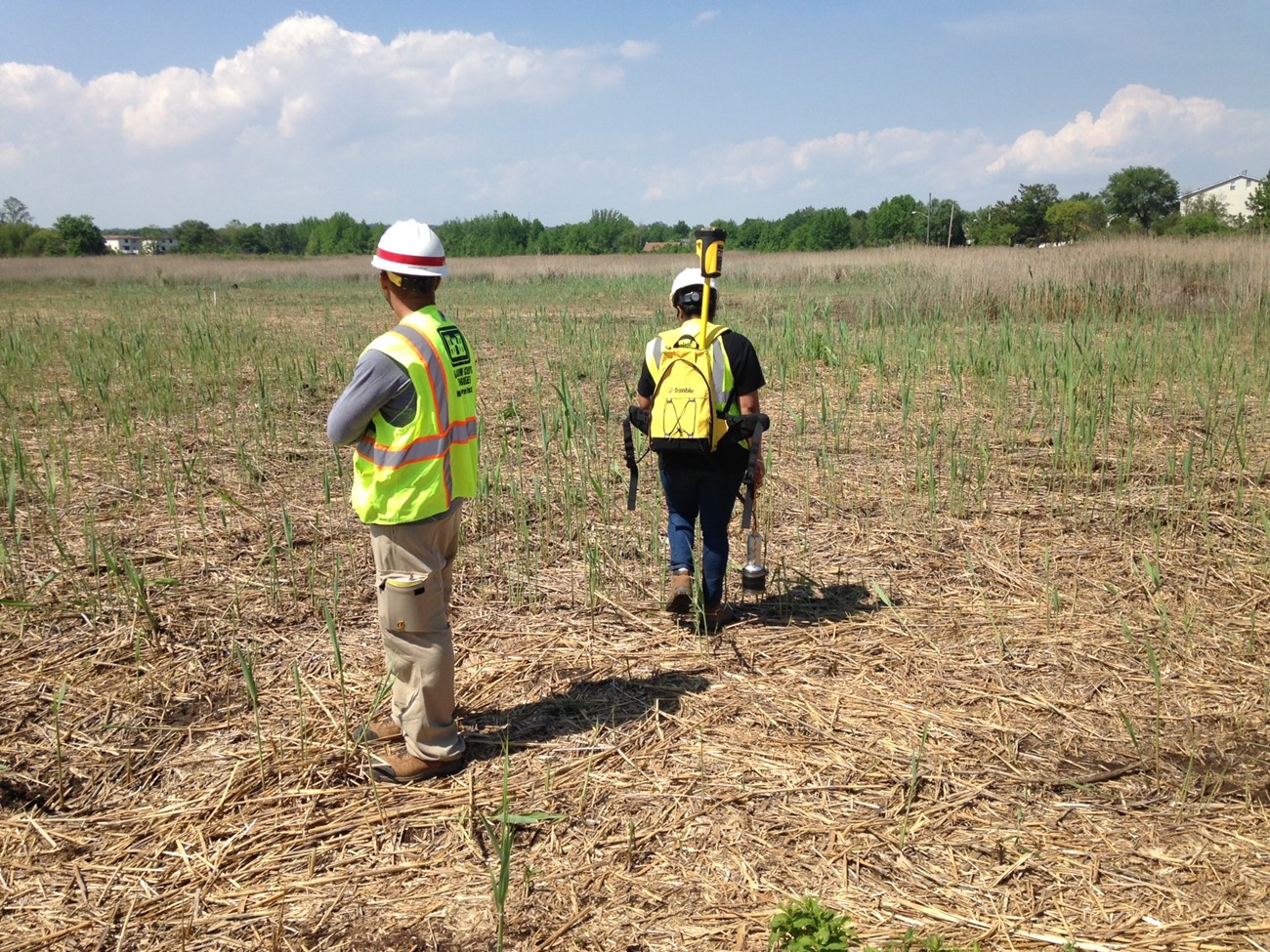Current Investigation

National Park Serivce In 2016, NPS accelerated the investigation of the 43-acre section of Great Kills Park (referred to as OU1), to inform construction planning for the South Shore of Staten Island Coastal Storm Risk Management Project which may be located within or adjacent to OU1. In 2017, NPS finalized a report of the OU1 Remedial Investigation findings. The report is available here and will also be made available to the public in the Great Kills Park Site Administrative Record File. 
NPS Photo The National Park Service (NPS) completed Phase 1 and Phase 2 field work associated with the OU2 Remedial Investigation in 2018 and 2021, respectively. Once a thorough investigation of the Great Kills Park site is complete, NPS plans to combine OU1 and OU2 data into a single, comprehensive site-wide Remedial Investigation Report that documents the nature and extent of contamination and the associated potential risks to human health and the environment NPS will use the information gathered during the Remedial Investigations at OU1 and OU2 to support a comprehensive Feasibility Study that will include the evaluation of site-wide remedial action alternatives to address environmental impacts. 
National Park Service Establishment and Public Use of Great Kills ParkGreat Kills Park comprises approximately 523 acres in the vicinity of the Raritan and Lower Bays of Great Kills Harbor, in the borough of Staten Island. In 1925 the City of New York initiated a land plan to develop Marine Park (a.k.a. Great Kills Park). The plan involved placement of waste fill to raise the property elevation, fill in the wetlands, and increase the useable land footprint to allow the property to be developed as a city park and shorefront recreation area. Using waste fill for this purpose was common practice at this time. The majority of the waste fill was placed from 1944 to 1948. The City of New York operated Great Kills as a city park until it was transferred to NPS in 1972 and became part of the Staten Island Unit of Gateway National Recreation Area. 
National Park Service Despite the closure of the contaminated area at Great Kills Park, there are many activities that the public can continue to enjoy. Buffalo Road and the multi-use path are open for walking, biking and hiking enthusiasts. Additionally, the swimming beach is open and under lifeguard protection from Memorial Day weekend through Labor Day. Fishing spots abound and the marina and boat launch ramp are available for boaters visiting Great Kills Harbor. CERCLA and NPS AuthorityNPS is authorized under the Comprehensive Environmental Response, Compensation and Liability Act (CERCLA) to respond as the Lead Agency to a release or threatened release of harmful substances and/or a release of any pollutant or contaminant that may present an imminent and substantial danger to public health or welfare on or from land under the jurisdiction, custody or control of the NPS. NPS moves all contaminated sites located on lands under its jurisdiction through four phases of cleanup. Each phase of cleanup has specific requirements and milestones based on CERCLA (or the applicable authority). At the Great Kills Park Site, cleanup phases and milestones are based on CERCLA and its implementing regulations documented in the National Contingency Plan (NCP). The NCP establishes the structure for responding to releases and threatened releases of hazardous substances. Enabling meaningful community involvement throughout the investigation, selection, and implementation of cleanup activities is an ongoing activity and requirement that reaches across all phases of the NPS Cleanup Framework. The following diagram depicts the NPS approach and key milestones for investigating and cleaning up the Great Kills Park Site. NPS Cleanup Framework PhasesPhase Activity
* Site Assessment Actual/Anticipated GKP Site CERCLA Milestones * Preliminary Assessment * Interim Removal Action Phase Activities
* Site Investigation Planning * Site Fieldwork * Site Analysis * Cleanup Action Vetting Actual/Anticipated GKP Site CERCLA Milestones * Time Critical Removal Action * HSA/RS * EIR OU1 * Sampling & Analysis Plan * EIR OU2 * Remedial Investigation * Feasbility Study * Propsed Plan * Record of Decision Phase Activities
* Cleanup Action Planning * Cleanup Action Implementation Actual/Anticipated GKP Site CERCLA Milestones * Remedial Design Report * Construction Completion Report Phase Activities
* Post Cleanup Action Monitoring * Five-Year Review Monitoring * Long-Term Monitoring Actual/Anticipated GKP Site CERCLA Milestones * Certificate of Completion * Final Monitoring/Long-Term Monitoring Report 
NPS Site Background/Environmental InvestigationsElevated levels of radioactivity were first discovered at Great Kills Park in 2005 during an aerial survey conducted by the New York City Police Department, which was developing a baseline radiological map of the City. From 2005 to 2007, NPS, working in conjunction with other entities, found additional areas of elevated radioactivity within the park. The source of radioactivity was subsequently determined to be Radium-226. Based upon the results of the TCRA, the NPS determined that a Remedial Investigation/Feasibility Study, pursuant to CERCLA, would be necessary to fully characterize the extent of contamination that may pose a risk to the public and/or the environment and to evaluate permanent remedial alternatives to address the contamination. In July 2015, NPS began scoping the Remedial Investigation activities, including developing a Historical Site Assessment/Records Search (HSA/RS). The purpose of the HSA/RS was to gather historical information about past site operations, environmental investigations, and potential contaminants. Information collected during the HSA/RS is being used to inform the investigation of the site. In 2016, Remedial Investigation field work in OU1 began. The activities conducted and findings of the 2016 investigation are documented in the 2017 OU1 Environmental Investigation Report. 
National Park Service The Consultative WorkgroupRecognizing and appreciating that a number of federal, state, and local agencies have an interest in the investigation and cleanup of the Great Kills Park Site, as well as responsibilities for protecting public health and the environment, NPS formed a Consultative Workgroup (CWG) made up of agency representatives. The purpose of the CWG is to share information so that NPS decision-making is informed and transparent among all government shareholders. The CWG provides a forum for sharing technical views of each agency on all aspects of the Remedial Investigation/Feasibility Study process. Through the CWG members have the opportunity to remain informed and to provide input as the investigation proceeds. 
NPS PHOTO Next StepsNPS completed Phase 2 Remedial Investigation field activities for the remainder of the site (OU2), an area that is five times larger than OU1, in fall 2021. Following completion of the OU2 investigation, a report documenting the field activities will be prepared. Community InvolvementCommunity Update May 2025 Community involvement activities at the Great Kills Park Site commenced in the fall of 2006 through a media advisory notice and a series of news releases, and has continued since then through a variety of mechanisms including site fact sheets/community updates, notices of availability of documents as specified by CERCLA and the NCP, and via letter, e-mail and/or at public meetings. The NPS has conducted direct public outreach, including public meetings and information sessions and provided updates at local Community Board meetings. NPS staff regularly updates members of Community Board 2 and Community Board 3 regarding the investigations and cleanup activities occurring at the Great Kills Park Site. These meetings are open to all members of the public. More information can be obtained by contacting one or both Community Boards.
As the Great Kills Park Site investigation and cleanup proceeds pursuant to CERCLA, there will be more opportunities for you to be involved in the process and provide input. In lieu of formal public meetings, you can obtain information and ask questions in a variety of ways.
|
Last updated: January 9, 2026
